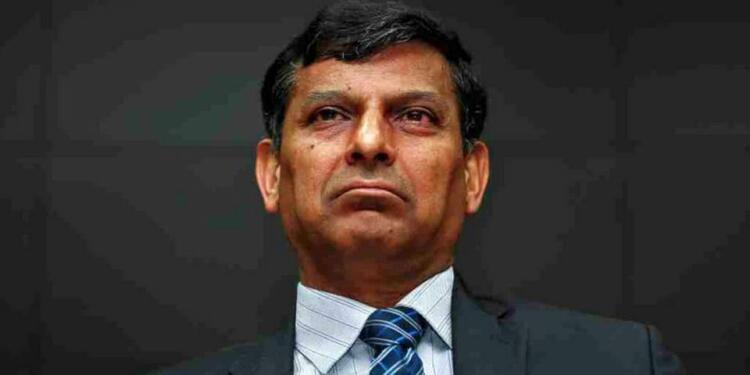Raghuram Rajan lecture: When Raghuram Rajan took charge of India’s banking sector, he was welcomed with absolute adulation. Unlike the government which appointed him was used to getting, praising words for Rajan was not a part of sycophantic exercise. His academic record and prediction of the 2008 financial crisis made him a credible candidate.
For a few years Rajan did well by trying his best to control the NPA. Though his ousting was controversial, he remained relevant for the Indian public by interacting with people working in different domains. His latest actions indicate that the man is more in talk with woke environmentalists than economists.
Rajan bats for service-led growth
Recently, Dr. Raghuram Rajan delivered a lecture on globalisation and climate change. Akin to the mood of the environment, Rajan advocated for minimising the impact of economic growth on climate. According to the former RBI governor, if governments focus on service-led growth, then it would have a positive impact on the climate. Rajan’s economic justification behind advocacy of service-led growth is that he believes it would help reduce inequality in industrial economies.
Dr Rajan believes that unlike manufacturing products, services do not have any weight which is the reason why it can reduce climate catastrophe. He is so firm on his opinion that the man did not even differentiate between the respective needs of industrial and emerging market economies. In other words, there is no difference between the needs of an industrialised Germany and underachiever India.
Cautioning that India’s manufacturing-led growth will be harmful for the world, In lecture Raghuram Rajan said, “Weightless services also consume little energy on the way to the final consumer, unlike manufactured goods. Export-led services growth will be much less environmentally harmful – the world cannot afford India to follow China’s path, even if it were open to it,”
In lecture Explaining his points, Raghuram Rajan advocated for the spread of production of services across the country. Up until now, India and other countries, which include developed ones like the US, Canada have traditionally relied on expansion of manufacturing to the hinterland and not services. Though, in later phases of industrialisation, services have also expanded, but that was only after those countries were termed as developed countries.
It is pertinent to note that developed countries here do not refer to those countries whose GDP numbers are high. The true mark of a developed economy is high per capita income and good human development indices. This is why despite India pushing back the UK on the economic table is not enough for declaring it as a developed country.
Fault Lines in arguments of Raghuram Rajan
Moving on, Rajan’s failure to explicitly outline the difference between needs of developed and emerging market economies is the reason why his prognosis is impractical. Let us understand it through studying the economic history of countries which have seen a rapid rise in their GDP.
One of them is the US, a highly developed one having high per capita income, with nearly 62,000 USD per capita income. The other one is rapidly developing but still an underachiever China with barely 11800 USD per capita income.
The US middle class is built on manufacturing jobs
First, we will look at how the manufacturing sector of the US shaped its economic history. After the end of the civil war, a severe recession had gripped the US economy. Industries and the government decided to resurrect the economy by focussing on the manufacturing sector.
Mines and lumber including that of gold and silver became a new source of capital for investment. The logistics sector, the backbone of manufacturing, witnessed a significant jump in its resources with railroads mileage increasing to about 190,000 miles (310,000 kilometres) from 93,262 miles (150,151 kilometres) in 1880.
Resultantly, aggregate annual value of all manufactured goods increased from about $5,400,000,000 in 1879 to $13,000,000,000 in 1899. The rapid transformation was the reason behind rapid technological investigation during 2 decades. By 1900, the US had surpassed the British, its former masters in producing iron and steel. The boat helped in the invention of telephone, typewriter, linotype, phonograph, electric light, cash register, air brake, refrigerator car among others.
The fact that the US was wealthy enough to contribute in WWI is directly attributable to the government’s emphasis on manufacturing. Within a span of 2 to 3 decades, the US went on from becoming a recession hit economy to a fully industrialised and developed one.
For the next 40 years, manufacturing continued to be the backbone of the US economy as it took shape as a developed country. However, after the 1940s, the time when the US hegemony got confirmed, the share of manufacturing has been constant in the American GDP.
A minor spike was observed in post WWII as the jobs in the sector helped the US to rebuild its middle class. The high rate of job creation is the reason why manufacturing is still relevant in the USA. Though the sector’s contribution to the GDP remains in the range of 11 to 13 per cent, it constantly employs nearly 20 per cent of the workforce.
China’s rise is attributed to manufacturing
You see, even after services became the backbone of GDP, manufacturing continues to be one of the pillars of job creation in the United States. Situation in China is a bit different as it is relying on manufacturing in 2022 as well. When Deng Xiaoping introduced a bit of liberalisation, Chinese knew nothing other than toiling like a donkey on orders.
That means that even if they wanted, CCP could not get people on board for anything else other than agriculture and manufacturing. Now, agriculture was already mired by disguised employment.
China decided to focus on manufacturing. For the next 3 and half decades, China went on to manufacture rail cars and locomotives, ships, and aircraft, consumer products including footwear, toys, iron and steel, aluminium, machinery, armaments, textiles and apparel, petroleum, cement, chemical, fertilisers, food processing and automobiles.
The peak of China’s industry arrived between 2011 and 2013, when it consumed more cement in 2 years than the whole of the US consumed in 100 years of the 20th century. On the back of its sheer manufacturing capacity, China lifted 80 crore out of poverty in 4 decades. Manufacturing share in job creation was a prime example behind it.
Despite that low per capita income does not allow experts to categorise China in developed economies. Though, China has been trying to move away from manufacturing-led growth. Share of manufacturing in China’s GDP has come down from 45.5 per cent in 2010 to 38 per cent in 2019. Its effects are more visible than ever since civil unrest has been quite rampant in China during the last few years.
Manufacturing helps economy to transition towards services
It is clear that while transitioning from developing to developed world, manufacturing is the ‘RATH’ on which an economy should ride. Manufacturing create jobs, which in turn creates demand for services, ultimately leading to growth of the services sector. Those countries which are not following this formula are seeing a crisis of unprecedented standard. Our neighbour Nepal is the best example of it.
Nepalese did not use huge remittances to start their own business. Instead, it led to more demand for luxury items and places like hotels, and resorts among others. All these things come under the service sector. Interestingly, Nepal’s service sector has witnessed an increase in the last few years.
But it has come off on a hollow base. Unlike developed economies, Nepal’s service sector is not built on the back of a strong manufacturing sector. Without manufacturing growth being strong, the service sector and henceforth economy of Nepal is collapsing, simply because it does not have many products to consume and keeps the economy floating.
West needs to be lectured, not India
We are lucky to not suffer setbacks like those of Nepalese as up until now; our growth is also mainly led by the service sector. But it can’t go on forever and the Modi government knows it. That is why initiatives such as Aatmanirbhar Bharat, Make-in-India, Stand Up India, Start Up India and PLI Scheme among others are there.
The Modi government wants to increase manufacturing share in GDP to at least 25 per cent. It is the only solution to the problem of unemployment which economists of the ilk of Raghuram Rajan have raised their concerns for.
But, now, Rajan seems to be more worried about the impact on Climate change than unemployment. There is a reason to worry, but it does not mean a country like India compromises with its ambitions. Developed economies like that of the US can do that, but Rajan won’t ask them. Because, historically, it has always been easier to suppress India’s interest in IVY leagues.
Support TFI:
Support us to strengthen the ‘Right’ ideology of cultural nationalism by purchasing the best quality garments from TFI-STORE.COM































